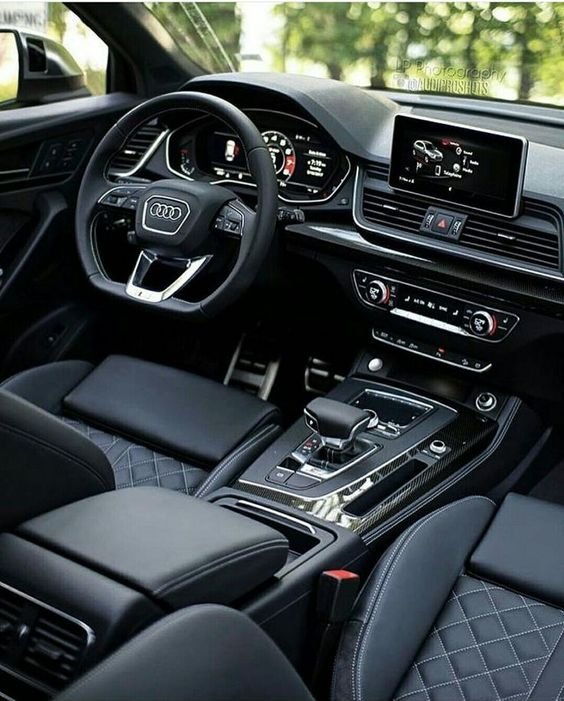
Negotiating the best deal on a car can be a daunting task, but with the right strategies and knowledge, you can save a significant amount of money and get the vehicle you desire. This comprehensive guide will walk you through the entire process, from preparation to finalizing the deal, ensuring you are well-equipped to negotiate effectively.
1. Preparation: The Foundation of a Successful Negotiation
Research and Planning
The first step in negotiating the best deal on a car is thorough research. Knowledge is power, and understanding the market, the car you want, and your financial limits will give you the upper hand.
Determine Your Needs and Budget
Identify Your Needs: Consider what you need in a vehicle, such as size, fuel efficiency, features, and intended use.
Set a Budget: Establish a realistic budget that includes the purchase price, taxes, fees, insurance, and maintenance costs. Stick to this budget to avoid overspending.
Research the Car
Make and Model: Choose a make and model that fits your needs and budget. Research its features, reliability, safety ratings, and resale value.
Market Price: Use resources like Kelley Blue Book, Edmunds, and NADA Guides to find the fair market value of the car. Knowing the average price will help you identify a good deal.
Incentives and Rebates: Check for manufacturer incentives, rebates, and special financing offers that can reduce the car’s cost.
Compare Multiple Options
Dealerships: Compare prices at different dealerships. Some dealers may offer better prices or incentives.
Private Sellers: Consider purchasing from a private seller if you find a well-maintained used car at a lower price.
Certified Pre-Owned (CPO): CPO vehicles offer the benefits of a used car price with additional warranties and inspections.
Financing Options
Understanding your financing options is crucial for a successful negotiation. Secure financing before visiting the dealership to give yourself more bargaining power.
Pre-Approval from Lenders
Banks and Credit Unions: Obtain pre-approval from your bank or credit union. They often offer competitive rates.
Online Lenders: Explore online lenders for pre-approval. Compare interest rates and loan terms.
Dealership Financing
Dealership Offers: Dealerships may offer financing, but compare their rates with external lenders.
Manufacturer Financing: Some manufacturers provide special financing rates for specific models. Check if you qualify for these offers.
Timing Your Purchase
The timing of your purchase can significantly impact the deal you get.
End of the Month/Quarter/Year
Sales Quotas: Dealerships have monthly, quarterly, and yearly sales quotas. Salespeople may offer better deals at the end of these periods to meet their targets.
New Model Releases: When new models are released, dealerships often offer discounts on the previous year’s models.
Special Sales Events
Holiday Sales: Look for sales events around major holidays, such as Memorial Day, Labor Day, and Black Friday.
Manufacturer Sales: Manufacturers occasionally offer sales events with significant discounts and incentives.
2. At the Dealership: Navigating the Negotiation Process
Initial Contact
Your initial contact with the dealership sets the tone for the negotiation. Be professional, confident, and well-informed.
Online Communication
Email and Chat: Contact multiple dealerships via email or chat to get price quotes. This allows you to compare offers without pressure.
Phone Calls: Follow up with phone calls to discuss details and ask questions.
In-Person Visits
Test Drive: Schedule a test drive to evaluate the car’s condition, performance, and features.
Inspect the Car: Check the car’s exterior, interior, and under the hood. Look for signs of wear and tear, and ensure everything is in working order.
Making the Offer
When making your offer, start with a reasonable but lower-than-expected price. This gives you room to negotiate up while aiming to reach a fair deal.
Use Your Research
Market Value: Base your offer on your research of the car’s market value.
Comparable Sales: Mention prices of similar cars from other dealerships to strengthen your position.
Be Ready to Walk Away
Firm Stance: Be prepared to walk away if the dealer doesn’t meet your price. This shows you’re serious about getting the best deal.
Alternate Options: Having multiple options gives you leverage and reduces pressure to settle for a less favorable deal.
Negotiating Tactics
Effective negotiation requires a combination of assertiveness, patience, and strategic thinking.
Separate Negotiations
Trade-In: Negotiate the trade-in value of your current car separately from the purchase price. This prevents the dealer from manipulating the figures.
Add-Ons: Decline unnecessary add-ons and extended warranties initially. Negotiate these separately if you decide you want them.
Counteroffers
Incremental Increases: If the dealer rejects your initial offer, increase it in small increments. This shows you’re willing to negotiate but won’t accept a high price.
Hold Firm: If the dealer’s counteroffer is too high, hold firm on your price. They may come back with a more reasonable offer.
Avoid Monthly Payment Focus
Total Cost: Focus on the total cost of the car, not the monthly payment. Dealers can manipulate loan terms to make monthly payments seem lower while increasing the overall cost.
Closing the Deal
Once you’ve agreed on a price, there are still a few steps to ensure everything goes smoothly.
Review the Contract
Details: Carefully review the contract to ensure all agreed-upon terms are included. Check for hidden fees and discrepancies.
Out-the-Door Price: Confirm the “out-the-door” price, which includes the car’s cost, taxes, fees, and any extras.
Final Inspection
Condition: Conduct a final inspection of the car to ensure it’s in the promised condition.
Documentation: Ensure all necessary documents, such as the title, bill of sale, and warranty information, are provided.
3. Special Considerations
Used Cars
Negotiating for a used car involves additional considerations, including the car’s history, condition, and potential repairs.
Vehicle History Report
Carfax or AutoCheck: Obtain a vehicle history report to check for accidents, title issues, and previous ownership details.
Service Records: Ask for maintenance records to ensure the car has been well-maintained.
Independent Inspection
Mechanic Evaluation: Have a trusted mechanic inspect the car for hidden issues. This can prevent costly repairs down the line.
Negotiate Repairs: If the inspection reveals issues, use them as leverage to negotiate a lower price or request repairs before purchase.
New Cars
Negotiating for a new car often involves incentives, rebates, and factory options.
Incentives and Rebates
Manufacturer Offers: Take advantage of manufacturer incentives and rebates to reduce the car’s cost.
Stackable Offers: Check if you can combine multiple offers for additional savings.
Factory Options
Essential Features: Focus on essential features and avoid paying extra for unnecessary options.
Custom Orders: If you can’t find the exact model you want, consider placing a custom order. Negotiate the price based on the dealer’s cost.
Financing and Leasing
Choosing between financing and leasing impacts your negotiation strategy and overall cost.
Financing
Interest Rates: Shop around for the best interest rates and loan terms.
Loan Term: Opt for a shorter loan term to save on interest, even if the monthly payments are higher.
Leasing
Residual Value: Negotiate the residual value of the leased car, which affects your monthly payments and potential buyout cost.
Mileage Limits: Ensure the lease includes a mileage limit that suits your driving habits to avoid excess mileage fees.
4. Final Tips for Successful Negotiation
Be Polite and Professional
Respectful Communication: Maintain a polite and respectful tone throughout the negotiation. Building a positive relationship with the dealer can work in your favor.
Firm but Fair: Be firm in your negotiations but fair. Aim for a win-win situation where both parties feel satisfied.
Stay Informed and Adaptable
Market Changes: Stay informed about market trends and adjust your strategy accordingly.
Flexible Approach: Be willing to adapt your approach based on the dealer’s responses and offers.
Leverage Online Tools
Comparison Websites: Use online tools and comparison websites to gather information and compare prices.
Mobile Apps: Utilize mobile apps for real-time price comparisons and dealer reviews.
Know When to Walk Away
Set Limits: Establish your maximum price and be prepared to walk away if the dealer exceeds it.
Alternate Options: Keep alternate options in mind to reduce pressure and make confident decisions.
Negotiating the best deal on a car requires thorough preparation, effective communication, and strategic thinking. By researching the market, understanding your financing options, and employing proven negotiation tactics, you can secure a favorable deal that meets your needs and budget. Whether you’re buying a new or used car, these tips will help you navigate the process with confidence and achieve the best possible outcome.
ALSO READ: Secrets in a Car That Only an Automobile Engineer Knows







